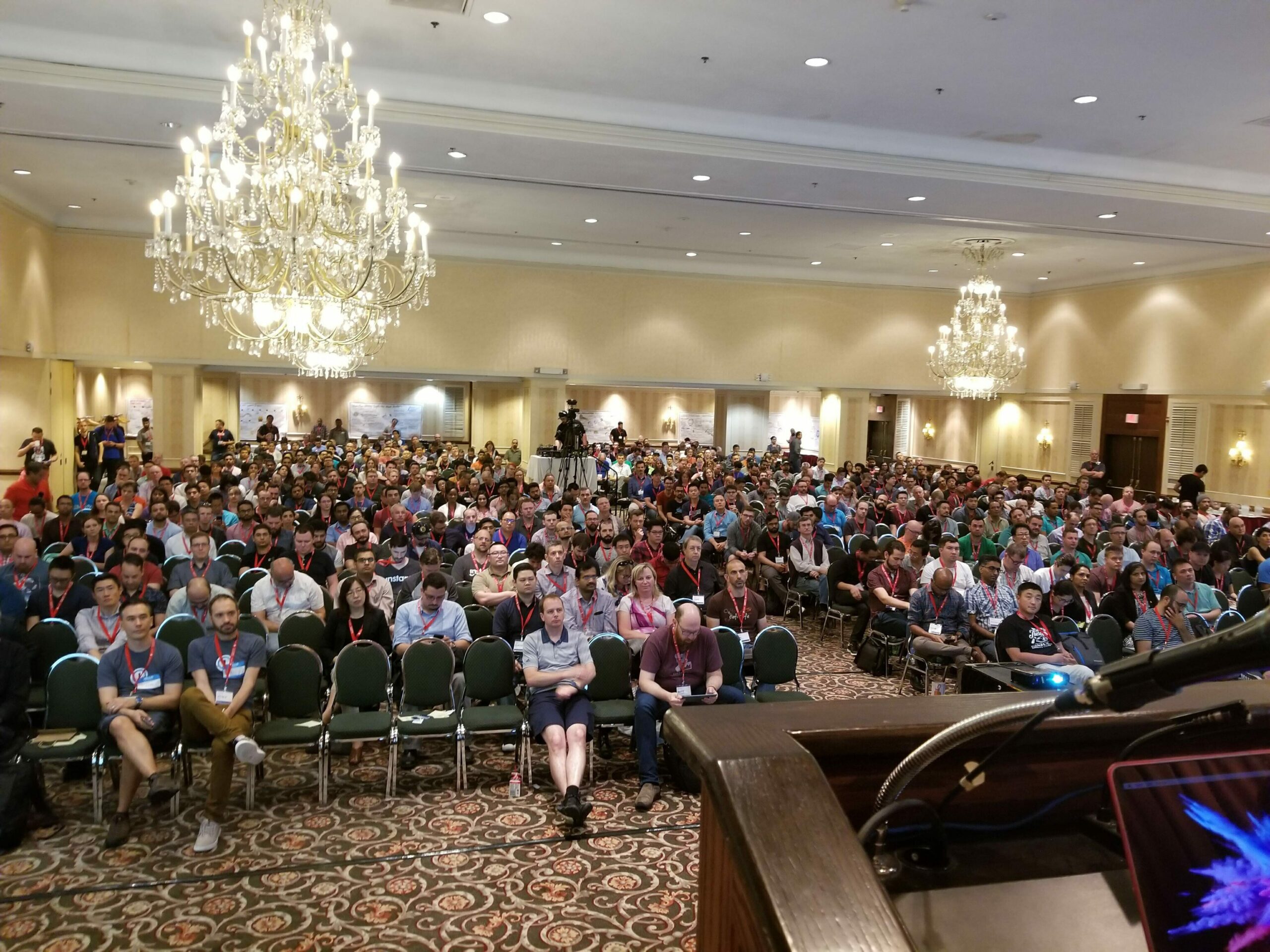I go to so many conferences! It’s an awesome and amazing part of my job. I speak at them, but I also attend them. I sit in the front row and live-tweet. I attend talks. I participate in unconference sessions. I talk to people in lines, and at lunch, and at the afterparty. I give out stickers and I say hi to the vendors. Conferences are something I’m an expert at. And when I’m not doing technology stuff, I am support crew for science-fiction conference runners.
Given that, I’m surprised that I haven’t seen a taxonomy of technical conferences, something that would help you understand which flavor of conference you’re about to go to. As near as I can tell, about 10 years ago, there was a great flowering of conference types.
Originally, we had The Technology Conference. People paid a lot of money, they sat in large conference rooms (over 100 people, say), and they listened to industry experts. Some/many of the industry experts were also vendors giving pitches.
Then, a decade ago, many people decided that this method was not meeting their needs, and they wanted more interaction, more peer contact, more connections. We ended up with some new species of conference:
- The regional variant of a language conference. No longer just PyCon, but PyConAU, and EU, and the same for JSConf and Ruby. It was cheaper to get people to someplace close to them, the conferences were smaller, the odds of meetings speakers and experts was higher.
- Single-track conferences with registration caps. Write the Docs, The Lead Developer, and (I think) Monitorama use this method. Everyone attends the same talks, but the registration cap means that it’s still possible to identify and talk to a speaker. A well-run single-track conference allows a lot of time between talks so people can mingle and talk.
- DevOpsDays. The DoD format is flexible, but tends toward the single-track morning, unconference afternoon. They also work really hard to fit into budgets that allow people to attend on their own, with lowish registration fees and locations all over.
- No Fluff, Just Stuff. The first unsponsored conference I’ve spoken at. No vendors, and a high rate of repetition for speakers and a lot of tracks, so odds are good that you will be in a small group.
- Birds of a Feather. Not unique to any one conference organizing system, but a way for people interested in a similar problem to find each other and do collaborative learning. Mostly these happen during non-programming time.
All of these conference styles prize collaborative learning over authoritarian instruction. If you’re a speaker coming from a more authoritarian background, I have to imagine the change is a bit of a shock. I know I have felt weird when presented with a large audience that I can’t see. I don’t want you to think that one way or the other is better – depends on what you need. 50k people wouldn’t go to AWS Reinvent if there wasn’t a value to be found in it. And Reinvent has small, unrecorded sessions as well as the massive keynote sessions.

DevOpsDays Toronto
So who are the stakeholders for running a conference?
- Attendees
- Sponsors
- Speakers
- Organizers
When you maximize the happiness or utility for one group, the utility for other groups goes down, or may go down. There are some overlaps. Attendees want content that answers their questions. Speakers want to provide content that is new and promotes their personal brand. Organizers want to select speakers who bring good value and are reliable. Sponsors want their speakers selected because talking about a product drives sales. Attendees, on the whole, don’t want sales-pitch talks. You see the problem!
As a speaker, I prefer single-track conferences. That way, I never miss other people’s talks! The talks are also usually very highly curated, since a day-long conference might only have 7 speakers, so it’s pretty darn flattering to get picked. As an attendee, I like conferences that are sized so each speaker ends up talking to about 50 people. It’s small enough that I feel engaged, and big enough that the speaker doesn’t feel like they have to stop to take questions. As a sponsor, I want multiple tracks with large spaces where people have to walk past my booth to get caffeine. As an organizer, well, I’m still working on that.
I’m thinking about this because LaunchDarkly is assembling our first conference this year (2019), in the spirit of Gremlin’s Chaos Conference and Honeycomb’s o11ycon. What do we want to give people, how many people do we think we’ll have, and how do we make the experience useful?
In the spirit of testing in production, we’re going to try a combination of things – keynotes will be one-track, so everyone has a common thing to talk about, and then we’ll split into other configurations in the afternoon.
We’re looking for people who want to join us on April 9 at Trajectory to talk about feature flagging, trunk-based development, devops tools, testing in production, blue-green deployments, and other ways to speed up your development and delivery…safely.
https://www.papercall.io/trajectory
If you want help with your pitch, or want to noodle around an idea, let me know. I’ll be back at work on the 7th and ready to think it through with you! (Yes, we’ll do bigger announcements later!)

